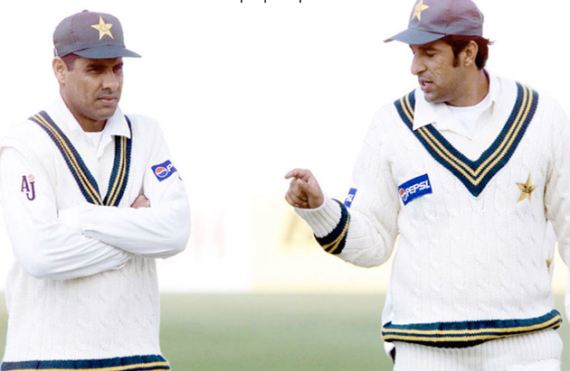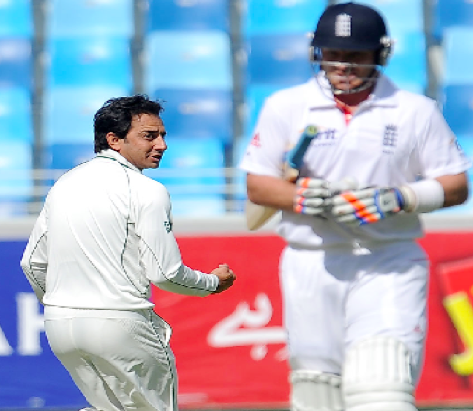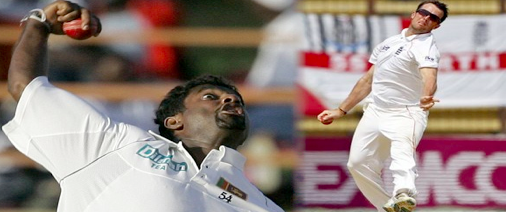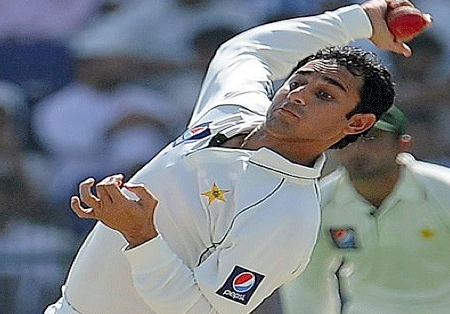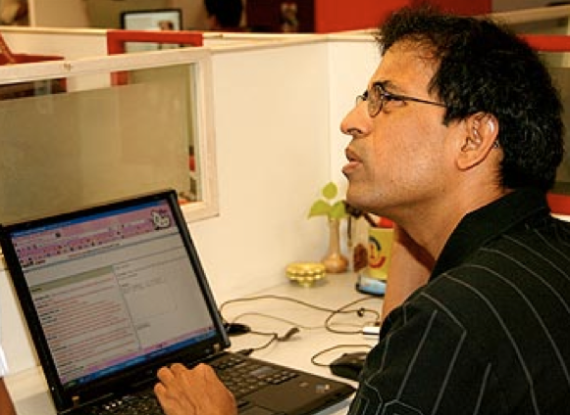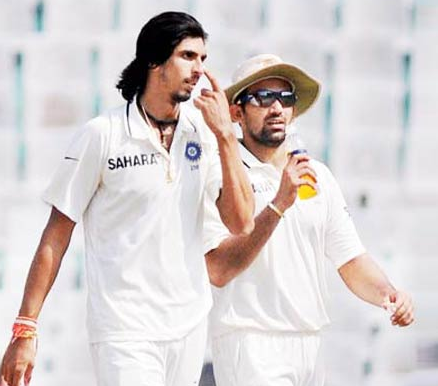
The sight of Wasim’s celebration in the nineties is imprinted on almost every Cricket fan’s memory
The Interview originally appeared at Dawn.com, this is the unedited version.
Audio-Part 1 & 2
When you started playing Cricket, how much of it was tape ball growing up?
A lot. A lot of tape ball, a lot of plain tennis ball. I remember six a side had started in Lahore and I was living with my grandmother in Inner Lahore at the time. This is around 83’ I think, I was about fifteen. Used to be a tape ball “professional” and would take Rs10/game to win sides matches.
It was only after 83’ then, that I started to play with a Cricket ball… Uss say pehley tau har jaga tennis ball tournaments hi khele..sarkon pai tournamnets ho rahay hain, ya chatoon pay, ya School ki lightonkay neechayn…Ramzan of course you used to have a tournament every night, so yes that’s how it started.
So what do you think of tape ball as the stepping stone for budding fast bowlers?
I think the idea is really to just play Cricket at the age. Get your muscles going and just getting used to fast bowling. Then when you have hit the age of fourteen you can make the transition to a Cricket ball. So when I started bowling with a Cricket ball, I was quite nippy, because with tape ball you are already used to exerting more energy, which means I had strengthened my shoulders before I had made the switch to the Cricket ball.
Because it’s a common theory that does the rounds that since Pakistan has tape ball we have a lot of fast bowlers, and India who play with the heavier MRF ball they don’t produce as many….
Maybe…..it’s a good observation but I have never thought about it in that regard. It could be the reason but I think the biggest factor is the difference in psyche…India main meray khial say fast bowlers aatay hain..,magar aik aik saal baad saaray ghaib ho jaatay hain bajay is kay ke aur taiz hoon.
Look at Irfan Pathan, RP Singh, Munaf I can keep on going with the list. Now they have found another in Yadav but let’s hope he can keep on going instead of fading away like the rest. So by phyche I mean they often lack the hunger and drive to keep going after hitting the biggest stage, they need to push themselves more and need good mentors to work with.
You don’t think it has any technical drawbacks for a fast bowler to grow up on tape ball and then suddenly make the switch to hard ball?
No not suddenly…aahista aahista. I went to a proper Cricket net the first time in ’83 when. A guy in my neighborhood Khalid Mahmood, a first class Cricketer, told me to go practice in the nets when he saw me bowling with tape ball on the streets. I was in class ten, didn’t really heed to his advice said “Nahi mujhe net pai nahi jaana”…so he basically forced and carried me there on the back of his bike to Ludhiana Gymkhana. That’s when I slowly left tape ball and switched to the Cricket ball.
You got a five-wicket haul in your first first-class match against N.Z, did you realize it then that “Yes I am made to do this” ?
No I didn’t. I thought while playing that game that if I don’t get any wickets I will be gone. Wo to saath out ho gaye…but I don’t know how. I remember getting Martin Crowe, John Wright, Edgar, Reid and all and got seven in the first and two in the second innings.
But after that I got good mentors. Javed Miandad who was my captain and he really groomed me in the Cricket camp, how to play, how to put in the hard yards. Mudassar Nazar was there and then I met Imran on the Australian tour in the mini World Cup.
So when did that feeling actually sink in?
I think when I got ten in my second test I realized…actually was told by Javed bhai “Tum ne mahnat karni hai…You can play long for Pakistan.” Mudassar Nazar insisted as well told me how to work hard. Tareeka bhi to hota hai na mehnat karnay ka, paaglon ki tarah thori bhaagay jaatay hain. So I am grateful that I had very good people surrounding me at the beginning of my career that helped me to become the bowler I was.
The story goes that you actually weren’t going to go to the open-net camp after not getting a turn in the nets…tell us a bit about that.
It was my coach Sabih Khan and fast bowler Saud Khan, a first class cricketer as well. I had gone up to them exasperated, “Mujhe bowling nahi mili teen chaar din, tau main nahi jaa raha”. But they insisted that I go, and they will call the people up and make sure I get a turn.
So the fifth day I went and got a turn with an old ball late in the day. I looked good…Agha Saadat Ali, a test-cricketer was the camp commandant and the next day he tossed me a new ball. I have never looked back since.
You had a small bustling run up not common to fast bowlers at the time, how did that come about?
It was the 87’ tour of England if I recall, before that I had a long run up. Imran told me why don’t you try a shorter run up, you will be able to play longer. And I said what about the pace? Imran bhai lai gaye mujhe saath apne and measured out a run up. And that’s where I ran in from and bowled at the same pace. So he said agar chotay run up say utni hee taiz kartey ho to faida kia lamba bhaagnay ka…and he was right…
How much was it Marshall’s influence ?
Marshall also did it later on in his career. I talked to him through out and kept picking his brains whenever I could because I always thought and it still remains the same that Marshall was the most complete fast bowler Cricket had ever seen.
I played against him and with him a lot. Always used to bugger him with questions, but he always gave me time and listened to me. And of course Imran, all of fast bowling’s technicalities, your psyche and reading the batsmen’s mind every thing I learnt from him.
So Imran was to you what Terry Jenner was to Warne?
Definitley. Fast bowling for sure. More generally I had two, him and Miandad.
Imran always used to stand at mid-on whispering in your ear, tell us a bit about that and if you can recall specific instances following or not following his advice.
I always used to follow his advice because I needed somebody to guide me, to give me confidence in the ball I was about to bowl. And Imran say behtar to koi bowler tha hi nahi confidence bharanay kai liyay.
With the new-ball we usually did the normal of bringing the ball in, but with the old ball he used to tell me to change it up. Kabhi bahar nikal lo, kabhi andar lay aao, kabhi bouncer kar do…
Did it ever happen that Imran was saying something else and you thought otherwise?
No I never did that, because he was Imran Khan. By 89’ I had become confident and knew what I was doing. Had played a few seasons in county and polished off my game.
Same with Waqar, we usually stood at mid-off or mid-on when the other was bowling. Aik doosray sai baat kartay rehtay the…laray hotay the magar baat kartay rehtay thay. What to do. What not to do. What should be done.
And it’s very important for young and experienced fast bowlers. I mean you only have to look at the Indian bowlers here in Australia to know that. They get hit around, they are lost, no body talks to them. At least I had people telling me what fields to set.
Your action if one sees footage of you through the years went through a lot of modifications. Who did you work with for that?
Mostly I just worked it out myself. Going around the wicket, going over. Sometimes front-arm over, sometimes open-chested. The idea is to distract the batsman, wo aik rat ki tarah moon utha kai bowling nahi karni. Sochna nahi, bas aa kar ball kar dena, that I didn’t want to become. Mudassar Nazar helped me a lot with these little things.
You see all these bowlers, Zaheer Khan now, Vaas earlier emulating you in the yorker they bowl. The arm goes more round arm before the action starts…
Yes the hand goes up and it’s a much higher release, the trajectory is better with ball dropping sharply to the base of the stumps…
Did you see someone doing that? Where did that come from?
I wasn’t told but was inspired by the great West Indian Joel Garner’s action. I gained confidence knowing I was emulating his action aur phir yorker sahi paka lagta tha.
Unfortunately I had to abandon that later on, because the cleverer batsmen figured out when the yorker was coming, so I started bowling bouncers with that change up.
Did you bowl the slower ball much?
Slower ball I learnt after ’92. Watching the West Indian Franklin Stevenson playing county cricket in England. In the nets I started practicing, hitting people on the head, having the ball go fly over the nets, only got it right after a lot of practice.
Uptill ’92 it was all about pace, but after the World Cup I started realizing that variations were necessary in the One-Day game. In county we would play up to three limited over competitions at a time so it became really useful once I started bowling it in actual games and picked up a few wickets with it.
In the Hampshire stint at the end of your career you said you practiced with the slower ball bouncer, no body was bowling that at the time…
Yes it wasn’t a variation used back then, but it was really at the end of my career that I started experimenting with that. I liked trying new things, was really the first that started using the left arm around the wicket angle consistently as a wicket-taking ploy.
How important is the left arm angle…
Very important, it is a very difficult angle for the batsman. When a left-armer comes round the wicket to a right hand batsman he is will always going to think the ball is going to tail in. Tau us nay khelna hi khelna hai wo ball, agar wo seedha reh jaye ya bahar nikal jaye tau edge hai.
Later on for some reason the mind set of umpires changed a bit and the lbws were not given from that angle, but early on when I started using it I even got lbws with the fuller length deliveries.
When did you consider yourself at the top of your game?
After 89’ playing the Australian series there. After that till the end I always felt in control. The county experience had really shone through by that time and I think that had a lot to do with it. Even my batting improved a lot after that and I felt I could compete…
Not just compete but actually feel that no one could really stand up to you?
Yes by compete I meant that I felt like I could get any one out. Kay daroon ga nahi kisi say, na darta tha as a bowler…
So was there no one you feared bowling to?
In that regard there have been many greats that have passed. Viv Richards, Martin Crowe, Allan Border, Mark Taylor…where there have been phases that some times they have won and sometimes I won, but was never intimidated by any one. Doosron ko intimidate kia hai, kabhi hoa nahi hoon. I knew how to tackle them, where to bowl what to them, bouncer, yorker I knew by 90’ how to get on top of a batsman.
Any spells that you remember in that regard.
There are many spells like that but where it started was in 89/90. The Australian tour, in Melbourne specifically where I picked up eleven wickets. Wickets with the new ball, then with the old ball, reverse swinging it both in and out… even bowling batsmen off low swinging full tosses.
You have said that you considered King Viv to be the greatest batsmen you have bowled to. Tell us a bit about how it felt like bowling to him?
Viv was a very different breed; it wasn’t just his batting but the whole aura that surrounded him. Over six feet tall, itnay itnay muscles, no sign of any protection, forget the arm or chest guard not even a helmet. So that whole aura was intimidating for a young skinny lad that I was at the time.
But I got him out a few times, because at that point he had started to come downhill and his greatest days were behind him, and I am glad I faced him then and not before.
How do you rate him with the modern greats?
His record is of course not the same in terms of numbers but he was the most devastating I have bowled to. It’s hard to rate him and compare him to the newer guys because I caught him so late in his career, but growing up I watched and admired him a lot. There was one name only and that was Vivian Richards.
But as a player playing against the best always gave me inspiration. Main kehta tha iss kay khilaf performance zaroor karni hai…Botham khel raha ho tau ussay girana hai…same with Viv and all the top guys.
And how would you rate them amongst themselves; Tendulkar, Lara, Ponting, Kallis, Inzi, Dravid?
Man it’s very difficult. They all have such amazing records, it’s difficult to pick one out of them…
Bowling at them who did you feel like was the hardest to bowl at?
Got Ponting out multiple times, without getting smacked around much. Tendulkar I didn’t play a test against in my peak for ten years. Also have gotten Lara out, but think he was the most difficult to bowl to. He was very unusual to a bowler’s eye…the bat coming down from up high at an awkward angle. Kabhi yahan jump karna kabhi wahan jump karna…so he was some one very different and difficult to bowl to.

Two Modern Greats of the ODI Era; unfortunately Wasim never faced up to the Little Master in Tests during his peak years
So no batsman worried or intimidated you ever…
If I had to pick someone it would have to be Gilchrist in ODIs…
You say that, but at the same time have some amazing dismissals against him…
Yes, but he has hit me quite a bit as well man. He wasn’t like an Afridi type pinch hitter. Kai pata hai kai Afridi sahib nay 100 main say aik match main chalna hai baaqi ka pata nahi…he was a proper batsman and could hit you at any time…
You also bowled to Sehwag. Was he comparable?
I have bowled very little to Sehwag and didn’t feel the same way. In 98/99 he came down at five or six in the Pepsi Cup in India and Akhtar and Razzaq got him I think. And the only other time was the 03’ World Cup where he had gotten off to a great start thanks to our “premium” fast-bowler Shoaib Akhtar.
So I wouldn’t say any one intimidated me. With Gilchrist though I was a bit weary when bowling
Pace is everything to a fast bowler, but there comes a time over a long career when you start losing it. When did that happen to you? And what were your feelings at the time, is there a sense of denial at all?
No I didn’t go through denial. After 97’ I think I realized that I had lost a bit of pace. Was always nippy, but I had mastered the swinging ball by then. There is no room for denial… Pata hona chiyay aap ko apnay khial main…a lot more to fast bowling than just pace.
Tell me a bit about defending that 125 against N.Z in 92/93 with Waqar?
It was a long time ago, but we had decided that ball haath say chorna nahi hai, because if we had left it then the match was gone…
Was there a tiff going on at the time as well?
No, Javed was captain at the time and Waqar was also new to the team. Javed bhai gave us the ball and told us what ever you can do you will have to do with the new ball. Tab tau thaktay bhi nahi thay hum…and it started to reverse a tiny bit at the end which gave us more hope, because N.Z never really learnt to tackle reverse swing, none of their batsmen really had a clue apart from Martin Crowe.
Your records in both Tests and ODIs are amazing but you got the feeling as a viewer that you especially enjoyed bowling with the white ball in your hand.
Yes early on, but later they changed the rules. The two new balls disappeared; the bouncers were banned which made it really difficult with one white ball. But I really enjoyed bowling in the death more than any thing else.
But as much fun as all that was, Test Cricket was the ultimate. In ODIs you knew that at end you bowl in the block hole, with the batsmen are hitting out, you will pick up wickets. Magar mazaa tau Test Cricket ka hee hai na phir.
So you agree with the two new balls coming back into ODIs?
Yes I do. I mean just look at Cricket today, every thing is tilted in the batsman’s favor. Especially on the Sub-Continent tracks where the ball deteriorates quickly and you started to lose sight of it after the 12th Over! So Thank god ICC had the brains to bring in some change.
Two deliveries. One is to Dravid in Chennai where you take the top of off after a loud lbw shout turned down, and the other is one to Croft in England where it defies physics and hits him infront only to be turned down. Both have created quite a furor on YouTube amongst the fans, can you tell us a bit about them.
I do remember them both being reverse swing. Croft I went round the wicket aur sahi zoor laga kar bowling kar raha tha. I bowled really fast on the Oval wicket, this was 96’I think. I remember somebody gave me a picture where Alec Stewart is ducking me and both his feet are airborne and over the wickets as he is swaying out of the way.
The second one… I had brought two balls into Dravid earlier. In this day and age he would have been given out with out a doubt. Magar nahi out diya….and before that in the previous over I had also just worked on bringing it in, and then I said ab main is ki laat say bahar nikaalta hoon ball and that’s what I did. And what I had visualized in my mind…that this is where I am going to pitch the ball and this is what is going to happen… thankfully exactly that happened.
So you are saying you had complete control over those miraculous deliveries?
Definitely yes. Tukkay main aisee ball nahi ho sakti. You can bowl a bouncer and get a top edge or the batsman gifts you a wicket off a fluke ball, but you can’t get wickets like those, with the old ball to boot off a fluke.
The 1999 WC loss, of course a low point in your career…
Very low man. Forget even the fact that we lost the final, the way we lost that match and the performance we gave…spineless.
How much did it hurt compared to 1996?
The feeling was very different. In 1996 it was more on the attitude of the players. We had players like Amir Sohail etc, I was injured, they knew I was injured and wouldn’t and couldn’t play the quarterfinal. And match sey pehle hi mood nazar aa rahay thay kay haar jaien gay, kiunke paata tha kay jeet gaye tau Wasim ka naam ho jaye ga.
You see these Cricketers have spent their entire careers trying to bring me down instead of focusing on their play. Iss liye apni performance bhi nahi kar paaye sahi tarah. They have always been distracted.
Back to ‘99 then, tell us a bit about the mood in the dressing room before the final, what was going through your mind.
We were very confident. The entire tournament we had been performing well. We had an excellent bowling attack in Shoaib Akhtar, Saqlain, Azhar, Razzaq and myself. We were batting down till no9….
In hindsight do you think the decision was right to bat first?
Always, I have always thought it was the right decision. We were batting first on seaming tracks through out the tournament and it had been working for us.
Relating to that, we saw a lot of highs during your captaincy, but one thing that also came to the fore was the chasing problem. Why?
I think it is more psychological more than any thing else. The Pakistan team still on most occasions falters when chasing, even scores like 220-230. A sense of fear creeps in and they are confused about the approach instead of just trying to get there sensibly with rotations of strike.
This fear doesn’t go with the team of the time, I mean starting from Imran and then you, Waqar as a bowler…Shoaib Akhtar all very aggressive players. Moin Khan another very aggressive cricketer, then why were you guys so defensive in chasing and had this “bakri” like approach?
It was always in the head, I think fear of losing becomes too much. Log kya kahain gay agar haar gaaye…the batsmen already start thinking of that instead of concentrating at the score. We did try to get rid of this mental stigma but in the end it depends on the batsmen and how good they are as players and more importantly how mentality strong they are. I mean you have to play out the fifty overs to chase 250 in the end either way you look at it.
Would you agree to the notion that Inzi, the great talent that he was, always shielded himself for his entire career by coming down at no5 ?
Of course, if Inzi had come at one or two down he would have been a different player. He would have had over 10 000 runs in Test Cricket, and would have had much more than Miandad even, who he wasn’t far behind when he ended.
But he always use to go on the back foot, because he didn’t believe in himself fully, that’s where Inzi’s problems always lied.
Quick…five wickets that come to your mind.
Hmmm…(long pause) I’ll have to think about them…
Just whatever is coming to your mind first
Nahi koi bhi nahi aa rahi abhi tau yaar
Kitni 500 wicketain lee hain…
Yes 500 ODI over 1000 first class wickets…I have to think about them… Is tarah nahi aa rahi agala sawal pooch lo beta
How was it playing under Waqar? What did you think of Waqar as a bowler? And as a captain?
As a bowler…great bowler, a great sight to watch, one of the greatest bowlers of all time.
As a captain he had no brains, no strategy and was always on the back foot.
But as a bowler he was one of the most pleasant sights and I don’t think I saw or will see a bowler like him ever again.
And as a coach?
I think Waqar did well for Pakistan, but I think he and other people in Pakistan should realize that once you have stopped playing that’s it for you, it is the players who will remain in the limelight not the coach. In our part of the world who ever is coach, wants power first then the job. Tum nay power kia karni hai bhai, tum ho kaptaan kay peechay, kaptaan aur players ki madad karnay kai liyay bas. Descion making is the captain’s job and he has the final say.
This is the wrong mentality that Waqar had and Miandad for that matter. Kay mujhay power day do saari, I mean I coach KKR and all I want is for the guys to listen to my advice and show up at the nets on time. Just make a strategy and give it to them and then it is up to them. Stay away from the limelight, like Gary Kirsten did. If any body wants to know how a coach should behave they should look at Kirsten’s model and how he remained in the shadow.
For most people growing up in the nineties the sight of you running in at Sharjah is imprinted in memory…how do you rate Sharjah and what are your other favorite venues.
Sharjah was good fun. I loved playing there because of the crowd (half Indian, half Pakistani), the noise levels, and the attention we got as players. The facilities were nice too, but the tension and the pleasure that tension brought when you got a wicket is what made that place so special.
But if I had to pick a ground it will have to be Melbourne because of the pace and bounce and because every time I bowled there I got wickets. In Pakistan I would pick Karachi and bowling in the evenings with the sea breeze coming in. It used to swing three, three feet some time, making it even hard to control some times in that breeze.
Any other bowler you would exchange your career for?
Malcolm Marshall.
You will exchange it, just like that…
Haaaan! Araam say.
Not Imran Khan?
Nahi as a bowler Marshall, as a leader Imran Khan of course.
When you played your last match in the 2003 WC, you were the highest wicket taker in the competition at the time. Do you think you could have gone on for longer?
Of course I could have played on. At least ODIs I would have like to carry on in. But for some reason the chairman at the time, Gen Tauqir Zia thought he knew more Cricket than me kiunke main khela hoon 100 Test, 400 One Day aur wo khela go shaaid aik club ka game. So it was more ego than any thing else.
When chairmans come in Pakistan Cricket their ego for some reason goes through the roof. They start thinking they are god…NouzibillAllah. And so I retired and thank god I did..kiunke un kai under main khelna bhi nahi chahta tha. Waqar ka bhi kaafi satya naas kia hai un sub nay…
Because there are a lot of fans who cling onto the hope that one fine morning they will wake up to a Wasim bhai come back, we heard you bowled recently in the KKR nets and were still troubling all the batsman…
Haan shooro main tau main bore hoa hoon wahan magar baad main ki hai bolwing sub ko. It was coming out fine and the batsman were troubled, swing ho rahi thi bowl…
So what do you say about a comeback?
No there is a time for every thing and I have had my time. Not like most Cricketers in our part of the world… jo coaching hi karay jaa rahay hain peechlay assi saal say, and don’t give any chance to the new people. I am not taking any names but you know what I mean.

Wasim’s blistering performance with the bat, and sheer artistry with the ball, won Pakistan the 1992 WC Final. It remains the country’s biggest sporting achievement to date.
Your memory is unfortunately fading and you are allowed to have one ball either the Alan Lamb or Chris Lewis ball remain intact. Which one?
Definitely Alan Lamb. It’s an unplayable delivery which was planned. I asked Imran what to do and he said do this. Fairbrother was there who told Lamb what was going to happen, that I was going to go around the wicket, because we played for Lancashire together. Magar Allan Lamb ko pata nahi tha kai around the wicket koi aisee ball bhi kar sakta hai. It was a very difficult ball.

